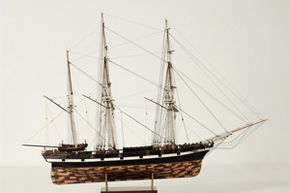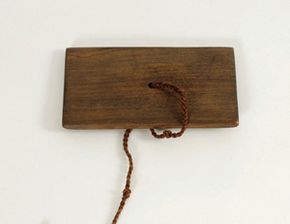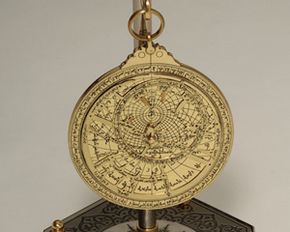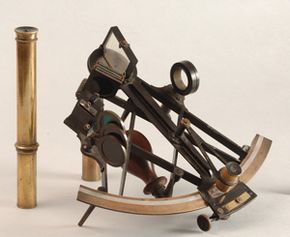 Model of the Sultanah, the vessel which carried the Ambassador of the Sultan Sayyid Said bin Sultan, to America in 1840; Salalah, The Museum of Frankincense Land
Model of the Sultanah, the vessel which carried the Ambassador of the Sultan Sayyid Said bin Sultan, to America in 1840; Salalah, The Museum of Frankincense Land The kamal: a simple, but effective device, widely used by navigators in the Indian Ocean; Salalah, The Museum of Frankincense Land
The kamal: a simple, but effective device, widely used by navigators in the Indian Ocean; Salalah, The Museum of Frankincense Land The astrolabe, an instrument that allows the sailors to verify their route, identify their position or predict their destination; Salalah, The Museum of Frankincense Land
The astrolabe, an instrument that allows the sailors to verify their route, identify their position or predict their destination; Salalah, The Museum of Frankincense Land Sextant and glasses; Salalah, The Museum of Frankincense Land
Sextant and glasses; Salalah, The Museum of Frankincense LandNavigational instruments
